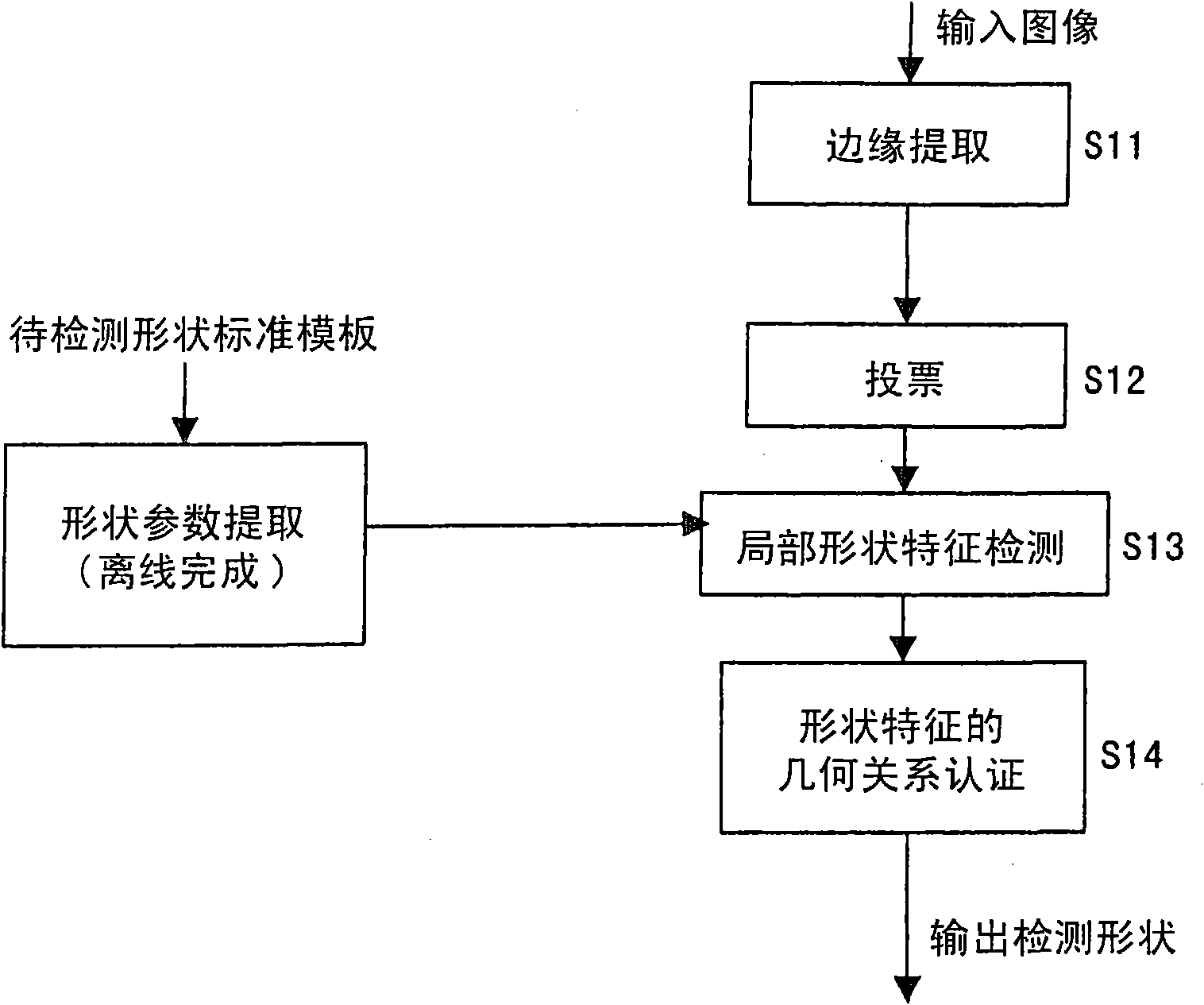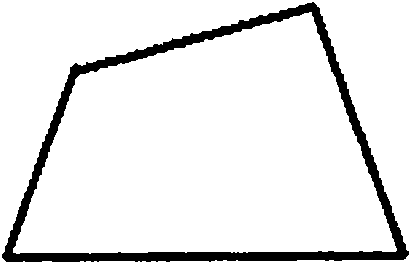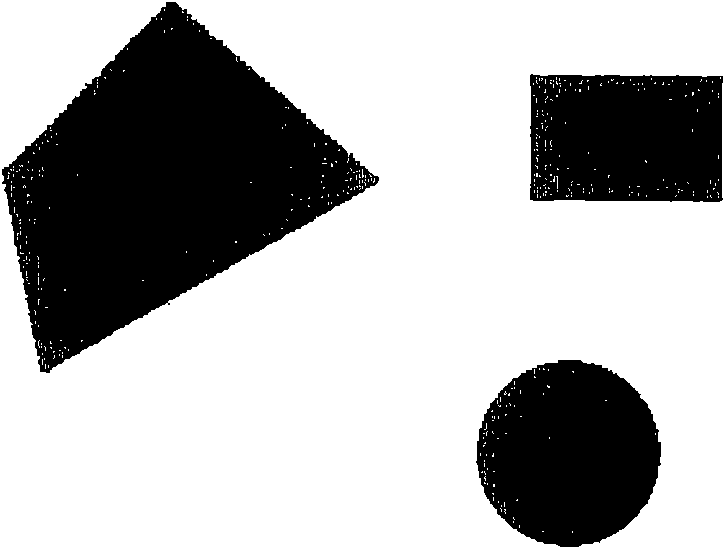Method and device for detecting shapes formed by combining arbitrary line segments
A technique of line segment and gradient orientation, used in image data processing, instrumentation, character and pattern recognition, etc.
- Summary
- Abstract
- Description
- Claims
- Application Information
AI Technical Summary
Problems solved by technology
Method used
Image
Examples
example 1
[0037] Example 1 (using the geometric relationship between inscribed circles)
[0038] Figures 2a to 2c A schematic diagram showing the basic process of polygon detection according to this example. in, Figure 2a is the standard template of the shape to be detected; Figure 2b is the input image, Figure 2c is the edge image representing the input image. compared to Figure 2a The standard template shown, Figure 2b There may be scale (zoom) and rotation transformations of the shape to be detected contained in the image shown.
[0039] Edge extraction is to extract the parts with obvious grayscale (or color) changes from the input image, which correspond to the boundaries of objects. If the image is regarded as a two-dimensional function f(x, y), where (x, y) is the pixel coordinate of the image, and f is the grayscale (or color) value of the point, then the edge corresponds to the function f and changes quickly The point of the function gradient The larger point, t...
example 2
[0069] Example 2 (using the geometric relationship between the inscribed circle and the line segment)
[0070] Example 1 utilizes the geometric relationship among inscribed circles in the shape to be detected for shape inspection. In addition, the geometric relationship between the inscribed circle and the line segment can also be used for shape inspection. In this case, the inscribed circle determined by the combination of some line segments in the shape to be detected can be detected first, and then the existence of these line segments can be verified by using the geometric relationship between the inscribed circle and other line segments. Below to detect Figure 11a with 11b The shape template shown is taken as an example to describe the various steps of this embodiment.
[0071] In the process of shape parameter extraction, such as Figure 11a The arrow shape shown consists of several long and short line segments, such as the long line l 1 to l 5 , and the two short ...
example 3
[0081] Example 3 (using the geometric relationship between the inscribed circle and the curve segment)
[0082] The previous examples 1 and 2 are only for geometric shapes composed of line segments, and the present invention can also be applied to detect shapes containing both line segments (3 and above) and curve segments. In this case, first detect the inscribed circle determined by the line segment combination, and then use the geometric relationship between the inscribed circle and other curve segments to verify whether the curve segment exists. Below to detect Figure 13a with 13b The shape template shown is taken as an example to describe its specific implementation.
[0083] According to this embodiment, during the shape parameter extraction process, Figure 13a with 13b The shape parameter table of the middle template can be shown in Table 3 (hereinafter referred to as the inscribed circle-curve segment table).
[0084] table 3
[0085]
[0086] Among them, P ...
PUM
 Login to View More
Login to View More Abstract
Description
Claims
Application Information
 Login to View More
Login to View More - R&D
- Intellectual Property
- Life Sciences
- Materials
- Tech Scout
- Unparalleled Data Quality
- Higher Quality Content
- 60% Fewer Hallucinations
Browse by: Latest US Patents, China's latest patents, Technical Efficacy Thesaurus, Application Domain, Technology Topic, Popular Technical Reports.
© 2025 PatSnap. All rights reserved.Legal|Privacy policy|Modern Slavery Act Transparency Statement|Sitemap|About US| Contact US: help@patsnap.com



